By: Luyi Cheng
Summer brings out the best in many people, places, and foods. Because summer is now coming to an end, we’re probably feeling more grateful now than ever for all the wonderful things the season brought. An example can very well be grilled pineapples enjoyed on a back porch. Even the most mediocre or bland tasting of pineapples can be transformed into a juicy and delicious treat once grilled. As a snack, as a side dish or as a dessert, you can enjoy your pineapples warm, charred, and juicy. And not only does grilling create a flavor explosion to look forward to, but it also accomplishes the appreciative task of getting rid of the stinging feeling that raw pineapples can leave in our mouths.
Why do pineapples feel like they sting?
Or burn, prickle, itch, or just feel plain uncomfortable?
Pineapples, in both the fruit and the stem, contain an enzymatic protein called bromelain.
Enzymes are proteins that help speed up the biochemical reactions inside of cells, which would otherwise happen way too slow for your cells to function. There are many types of enzymes as well. Bromelain in pineapple is a type of enzyme known as a protease, which breaks other proteins apart by cutting the chains of amino acids. Even more specifically, bromelain is a cysteine protease, meaning that it breaks apart proteins wherever they have a cysteine amino acid.
The bromelain in pineapple breaks down the proteins of the protective mucous lining and surface tissue of our mouths and tongues.
Bromelain by itself isn’t the only reason that cause pineapples to irritate. If you consider cysteine proteases found in papayas (known as papain), they don’t quite produce the same intense effect. The other reason is because pineapples are also more acidic. When that trait is coupled with the bromelain ‘digesting’ our mouth tissue, the irritating sensation intensifies.
Thankfully, our bodies can regenerate cells and repair our mouth tissues, so the feeling will eventually dissipate.
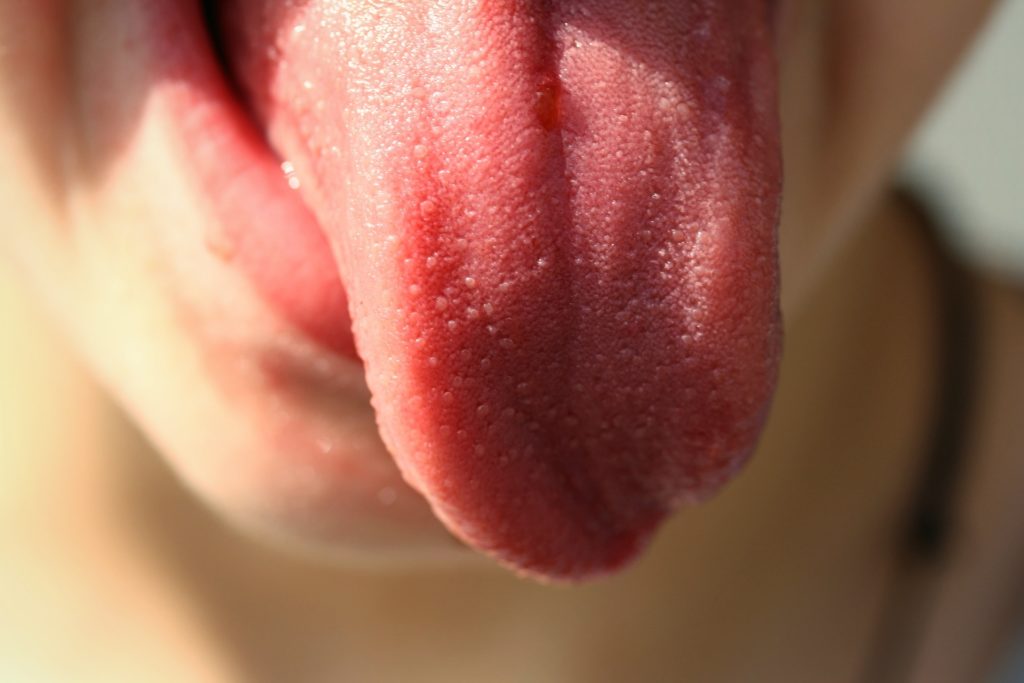
Why does grilling the pineapple keep it from stinging?
The function of every protein is determined by its structure. If you think of kitchen tools and how knives can cut because they’re sharp or spoons can scoop because they’re round, proteins are the same way. Proteolytic enzymes are shaped to have an active site specifically meant for cleaving apart the exact amino acids it can fit. These protein structures are held together by interactions between the amino acids and by the liquid they’re floating around in.
When you grill a pineapple (and therefore apply heat), all of the interactions between the amino acids holding the protein together are disrupted and broken up in a process called denaturation. Instead of the specific and purposeful shape the protein was originally folded into, they become just a shapeless chain of amino acids and are unable to function. The bromelain in pineapple can no longer break down the proteins in our mouths.
What are other ways to prepare pineapples and avoid irritation?
Here are three additional ideas for preparing your pineapples:
- Bake it
Just like grilling, baking the pineapple heats the pineapple to high enough temperatures to disrupt the non-covalent interactions between amino acids, unfold the protein, and denature the structure. Who can say no to delicious home-made baked goods? I’d suggest baking a pineapple upside-down cake. Yum.
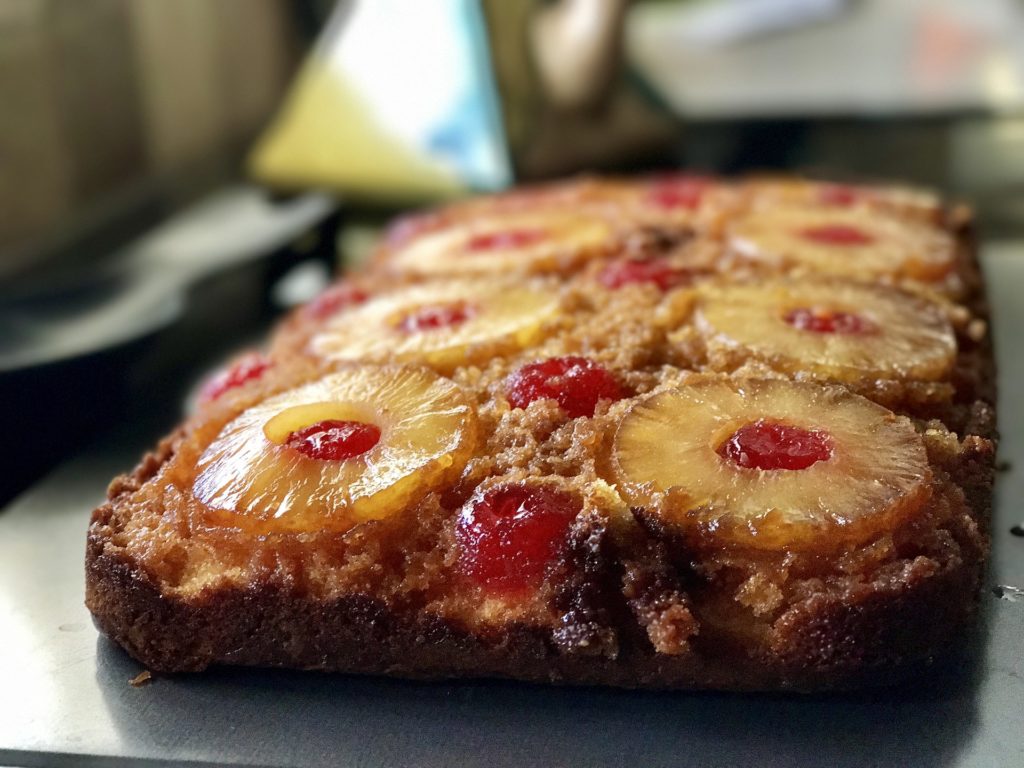
Again, heat is essential. It’s why adding unprocessed or raw pineapples to gelatin to make any type of fruit jelly isn’t going to work. Gelatin is derived from collagen, and the pineapple will break it down and keep it from setting. For this reason, recipes will recommend canned pineapples, which have been heated as part of the canning process.
- Soak it in salty water
If you prefer to eat the pineapple in its raw form, here’s another option: soak the cut-up pineapple chunks in some salty water. Each of the 20 types of amino acids that make up proteins has certain properties, including charge and polarity. These properties play a role in how the amino acids will pack together to increase the structure’s stability. Table salt (sodium chloride), once dissolved in water, separates into positively charged sodium ions and negatively charged chloride ions that disrupt the interactions between proteins and water molecules. This will also destabilize the protein and denature its structure. Just give the pineapple a quick rinse after soaking.
- Use it as a meat tenderizer
While your tongue can regenerate the cells on your tongue (thankfully), a cut slab of meat doesn’t quite have the same ability. Bromelain can digest the collagen proteins that make meat tough, so it’s an effective tenderizer. When you buy powdered meat tenderizers, they’ll often contain extracted bromelain or papain as the active ingredient.
You can also use the fresh fruit itself as a meat tenderizer for that extra burst of distinct flavor. Most recipes will recommend that you incorporate the pineapple (usually as a juice) into a marinade to marinate your meat in before cooking. But be careful not to leave it for too long because the enzymes can over tenderize your meat and give you a mush!
So, if you still have time to enjoy the remaining days of sun, clear skies and warmth, go outside and enjoy some grilled pineapple with your family and friends! Or buy some canned ones later to bake a cake.

Photo by Lisa Fotios from Pexels
Did you have a good time learning about pineapples? Come check out our Instagram and Facebook to learn more food science facts!
References
[1] Arshad, Z.I.M., Amid, A., Yusof, F. et al. (2014). “Bromelain: an overview of industrial application and purification strategies.” Appl Microbiol Biotechnol. 98: 7283.
[2] Jutamongkon, Rungtip & Charoenrein, Sanguansri. (2010). “Effect of Temperature on the Stability of Fruit Bromelain from Smooth Cayenne Pineapple.” Kasetsart Journal – Natural Science. 44.
[3] Maurer, H. CMLS, Cell. (2001). “Bromelain: biochemistry, pharmacology, and medical use.” Mol. Life Sci. 58: 1234.
[4] Rowan, A.D. (2013). “Chapter 425 – Fruit Bromelain.” Handbook of Proteolytic Enzymes. 2: 1874 – 875.
[5] Rowan, A.D. & Buttle, D.J. (1994). “[38] Pineapple cysteine endopeptidases.” Methods in Enzymology. 244: 555 – 568.
[6] Arakawa, T. & Timasheff, N.F. (1991). “The Interactions of Proteins with Salts, Amino Acids, and Sugars at High Concentration.” Advances in Comparative and Environmental Physiology. Advances in Comparative and Environmental Physiology. 9: 226 – 245.
[9] Retrieved from https://www.cooksillustrated.com/taste_tests/291-tenderizers. Accessed September 15, 2019.
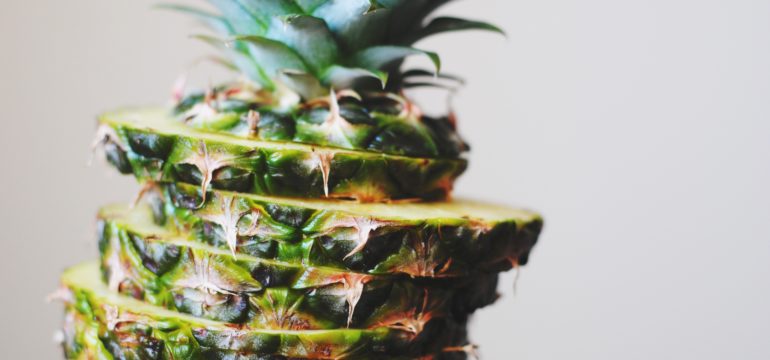

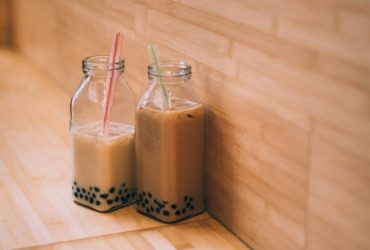

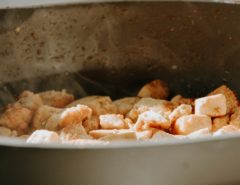

Leave a Reply